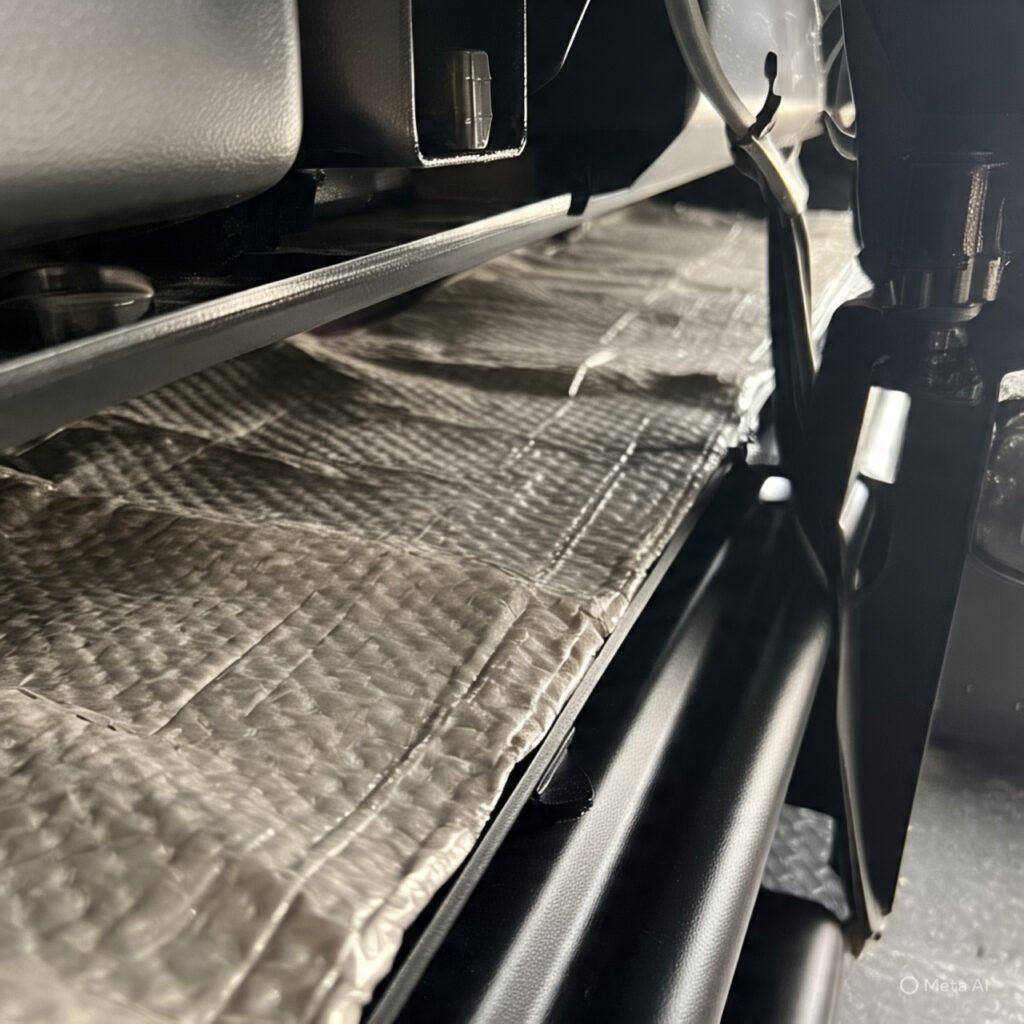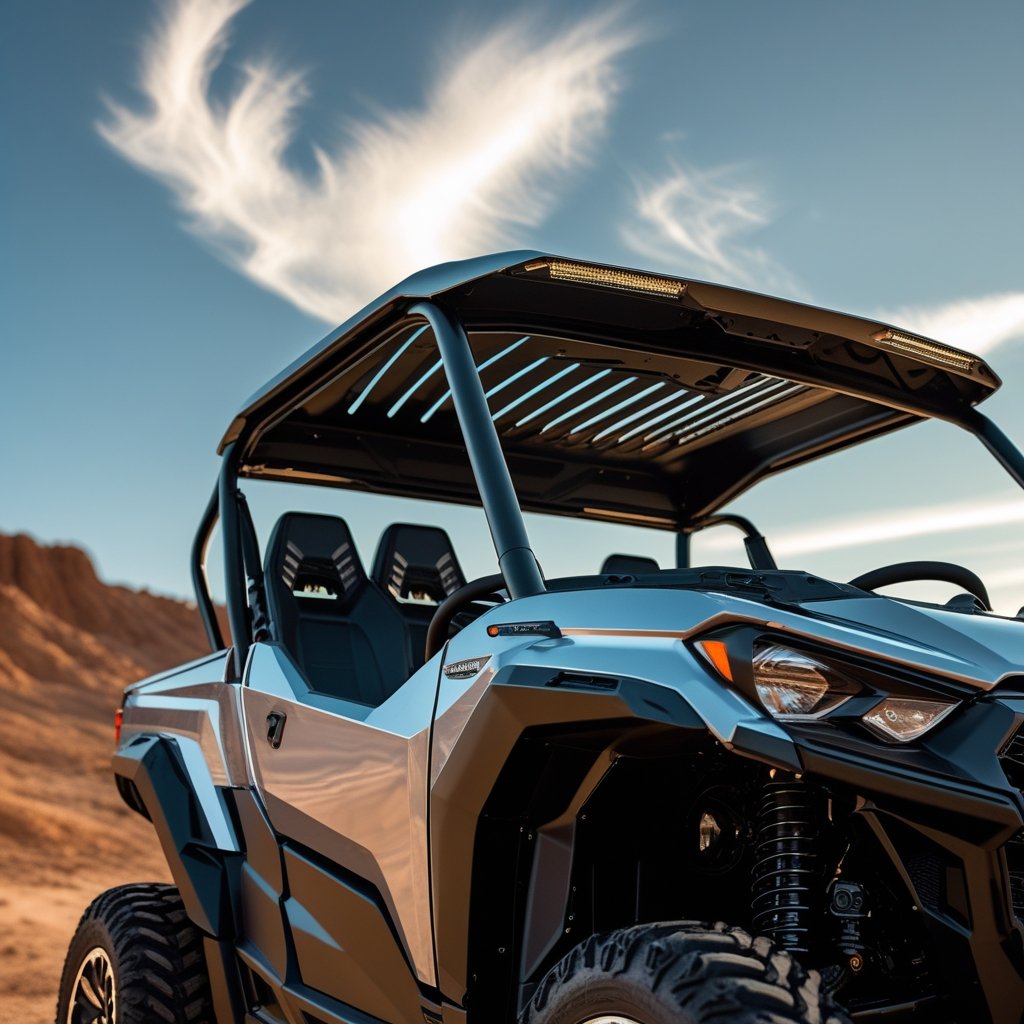Hey fellow off-road fanatics! Let’s talk about something we’ve all experienced: that moment when your awesome UTV adventure starts feeling less like fun and more like being slow-cooked inside a tin can.
We love pushing our machines through tough terrain, but on a hot day, that cab can turn into an absolute oven, right? The sun beating down, the engine radiating heat… it can get seriously uncomfortable, even borderline unbearable.
I’ve definitely cut rides short because the heat inside the cab just got too intense. It saps your energy, makes you irritable, and honestly, it can even be a safety concern if you start feeling overheated. Finding ways to reduce heat in UTV cab isn’t just about comfort; it’s about extending your ride time and staying safe.
Luckily, there are a ton of things we can do, ranging from simple DIY tricks to some really effective aftermarket solutions. In this post, we’ll dig into where all that heat comes from and explore the best strategies for insulation, sealing gaps, improving airflow, and more. Let’s figure out how to make those hot-weather rides enjoyable again!
Why Does My UTV Cab Get So Hot? Identifying the Culprits
Before we can fix the problem, we need to understand where all that heat originates. It’s usually a combination of factors:
- Engine Heat: This is a big one. The engine and exhaust components sit close to the cab, often right under or behind the seats, radiating significant heat, especially during slow-speed crawling or after a hard run.
- Radiator Heat: The radiator does its job cooling the engine, but where does that hot air go? Often, it gets blown back towards the cab and finds its way through gaps in the firewall or up through the center console tunnel.
- Exhaust Heat: Similar to engine heat, the exhaust pipes running under the vehicle can radiate a surprising amount of heat upwards into the floorboards and seating area.
- Sunlight/Greenhouse Effect: A big windshield and roof act like a greenhouse, trapping solar energy and heating the air inside, especially if you have dark-colored surfaces.
- Lack of Airflow: Once hot air gets into an enclosed or partially enclosed cab, it doesn’t have anywhere to go. Stagnant air just keeps getting hotter.
Understanding these sources helps us target our efforts to effectively reduce heat in UTV cab.
Sealing the Gaps: Blocking Hot Air Intrusion
One of the most effective ways to combat cab heat is to stop it from getting in in the first place. Hot air loves to find little gaps and sneak in, especially from the radiator and engine bay.
Firewall & Console Sealing
This is often the biggest offender. Feel around your center console, shifter boot, and where the firewall meets the floor. You’ll likely find gaps where hot air is blowing in, especially air coming off the radiator.
- Methods: People have great success using simple materials. Cut pieces of dense foam (like those garden kneeling pads mentioned on forums) and stuff them into larger openings, particularly the big one often found in the center firewall where radiator air rushes down the driveshaft tunnel. Use high-temp RTV silicone to seal smaller gaps around wires or hoses passing through. Products like the Wolfsnout Cool Cab Kit include pre-cut pieces specifically for these areas. Heavy-duty tape like Gorilla tape can also seal seams effectively.
- Focus: Pay close attention to the driveshaft tunnel – it’s a major conduit for hot air.
Floorboard & Drain Hole Sealing
Check your floorboards for unnecessary drain holes or gaps where panels meet. While some drainage is good, excessive openings let in heat and dust from below.
- Methods: Use rubber plugs to fill unused drain holes. Seal seams with silicone or appropriate tape. Some insulation methods (covered next) also help seal these areas.
Insulation is Key: Adding Heat Barriers
Blocking airflow is step one; step two is insulating against heat that radiates through panels.
Under-Seat & Behind-Seat Insulation
The area under and directly behind your seats is right above the engine and exhaust on many models. Insulating here makes a huge difference.
- Materials: Reflective bubble insulation (like Reflectix, found at home improvement stores) is a popular DIY choice. It’s lightweight, easy to cut, and reflects radiant heat. Use high-temp adhesive spray or foil tape to attach it. Adhesive-backed foam/foil insulation products are even easier to apply. Dedicated kits like the Wolfsnout Behind Seat Shield offer pre-cut, multi-layer solutions often coated for durability.
- Benefit: Significantly reduces heat felt through the seats and back panel.

Center Console Insulation
That center console often gets roasting hot from the driveshaft and sometimes coolant lines running through it.
- Materials: Apply the same types of reflective or foam/foil insulation to the inside surfaces of the console tunnel. Make sure the adhesive is rated for high temperatures.
- Benefit: Stops the console from becoming a radiator itself, making it more comfortable to rest your leg against.
Roof Insulation
Don’t forget the roof! Especially if it’s a dark color, it absorbs a lot of solar heat.
- Materials: You can buy pre-made UTV headliner kits that add an insulating layer. Alternatively, apply adhesive foam insulation directly to the underside of the roof panel.
- Benefit: Reduces the greenhouse effect and keeps the cabin cooler overall.
Improving Airflow: Getting the Hot Air Out
Sealing and insulating keeps heat out, but managing airflow is crucial for comfort, especially in fully enclosed cabs.
Vented Windshields
These are a must-have for many riders. Windshields with adjustable vents allow you to control fresh air intake.
- Benefit: Brings in cooler outside air without subjecting you to the full blast of an open windshield. Helps push hot stagnant air out.

Opening/Tilting Windshields
Full windshields that can tilt outwards at the bottom or flip up offer maximum airflow when needed, essentially turning your enclosed cab into an open one temporarily.
- Benefit: Great for slow-speed sections or when you just need a major cool-down.
Rear Window/Panel Management
This is key for creating flow-through ventilation. If you have front vents or an open windshield, having the rear window open or removed allows hot air to escape out the back.
- Benefit: Prevents the cab from becoming a pressurized hot box. If you need a rear panel for dust, consider one with vents.
Specialized Door Latches (Aero Latches)
An innovative idea! Products like Supercomp USA’s Aero Latches replace your stock door latches and are designed to hold the door open just a tiny crack, allowing constant, subtle airflow without the noise or exposure of a fully open window.
- Benefit: Improves ventilation and helps reduce heat in UTV cab without significant drawbacks.
Cab Fans
A simple but effective addition. Installing one or more 12-volt fans inside the cab helps circulate air.
- Benefit: While it doesn’t lower the actual air temperature, moving air feels much cooler on your skin and helps combat that stagnant, stuffy feeling.
Other Strategies to Reduce Heat in UTV Cab
Beyond the main methods, consider these:
- Radiator Relocation Kits: This is the most extreme solution, moving the entire radiator (usually to the rear or roof). It drastically reduces heat entering the cab but is expensive and complex to install.
- Exhaust Wraps/Shields: Wrapping exhaust pipes with heat wrap or adding metal heat shields can reduce the amount of heat radiating upwards.
- Color Choices: When buying a machine or accessories like roofs, lighter colors reflect more solar heat than dark colors.
- Parking: Seems obvious, but park in the shade whenever possible during breaks!

Conclusion: Reclaim Your Ride!
Dealing with excessive cab heat can seriously detract from the fun of off-roading. But as we’ve seen, there are plenty of effective ways to fight back!
By understanding where the heat comes from and applying a combination of strategies – sealing gaps, insulating key areas, and improving airflow – you can dramatically reduce heat in UTV cab and make your rides significantly more comfortable, even on scorching days.
Start with the basics like sealing obvious air leaks and adding some DIY insulation. Then consider upgrades like vented windshields or specialized kits if you need more relief. Taking steps to reduce heat in UTV cab is an investment in longer, safer, and more enjoyable adventures.
What are your best tips for staying cool in your UTV? Did I miss any killer products or tricks? Share your experiences in the comments below – let’s help each other beat the heat!
Stay cool and enjoy the ride!














